#catherine walthers
Text
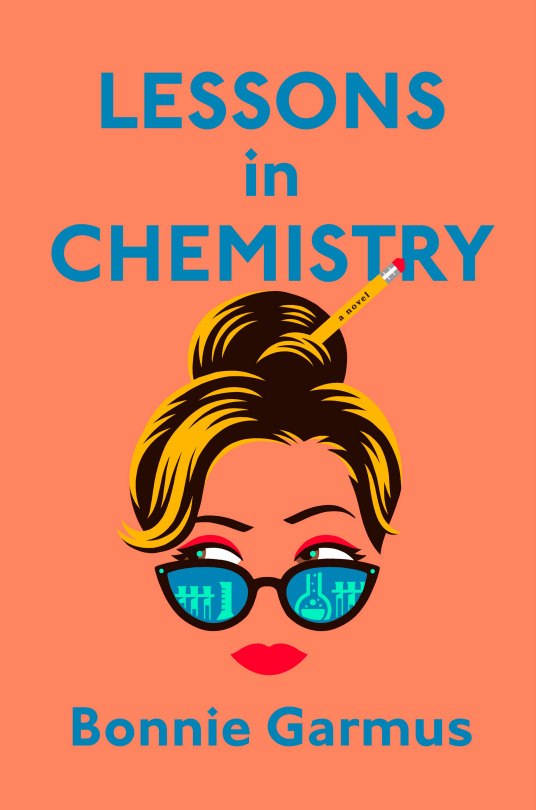

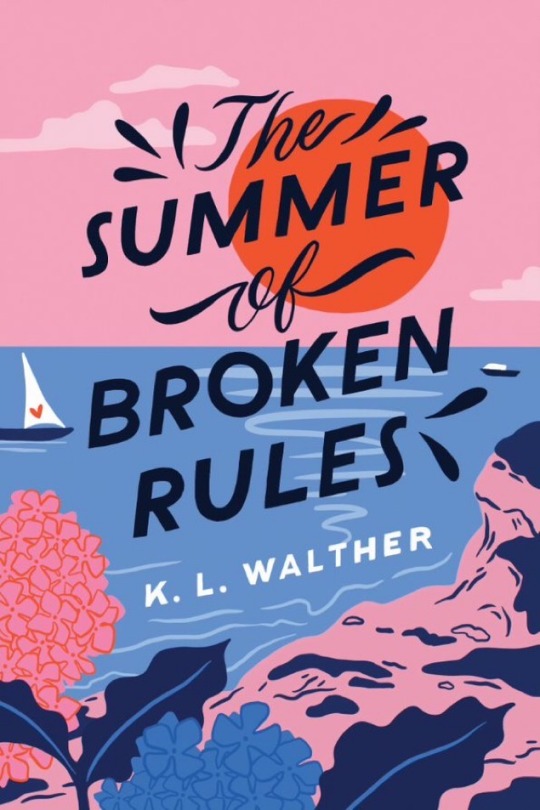

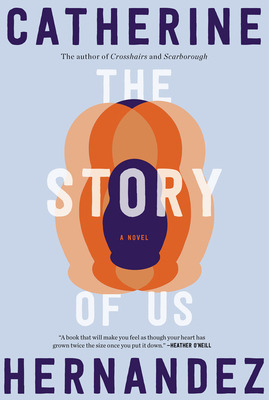
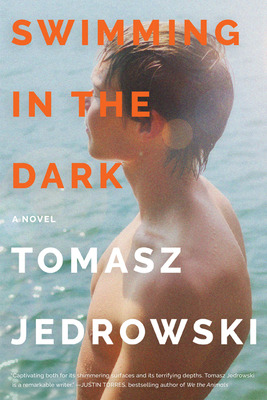
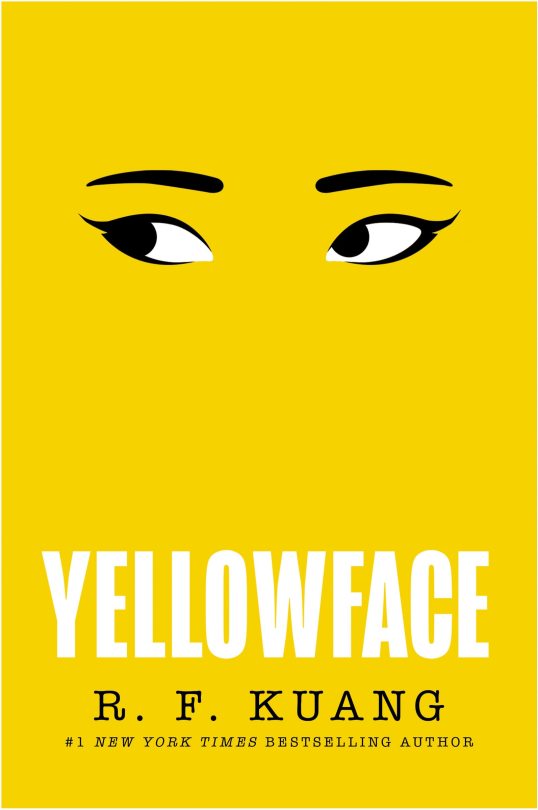

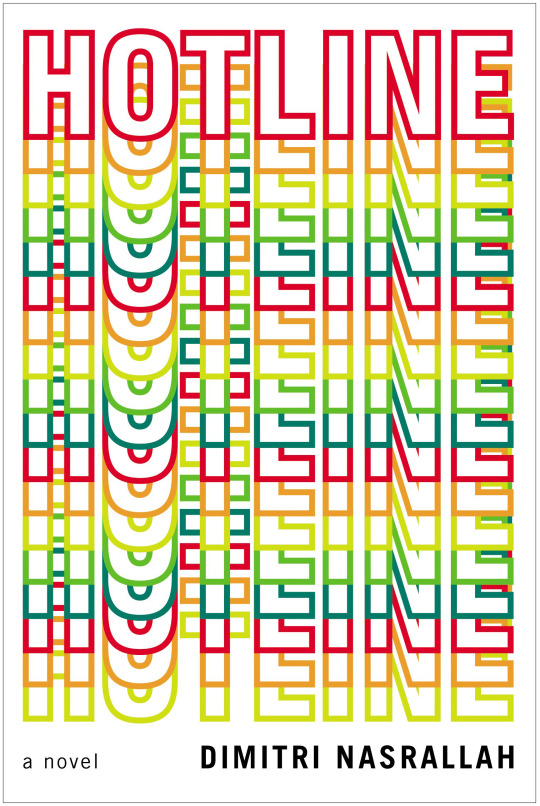

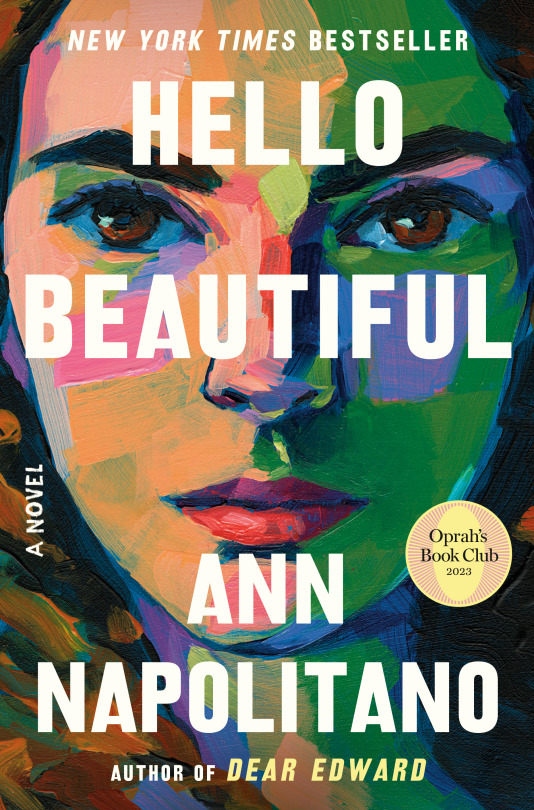
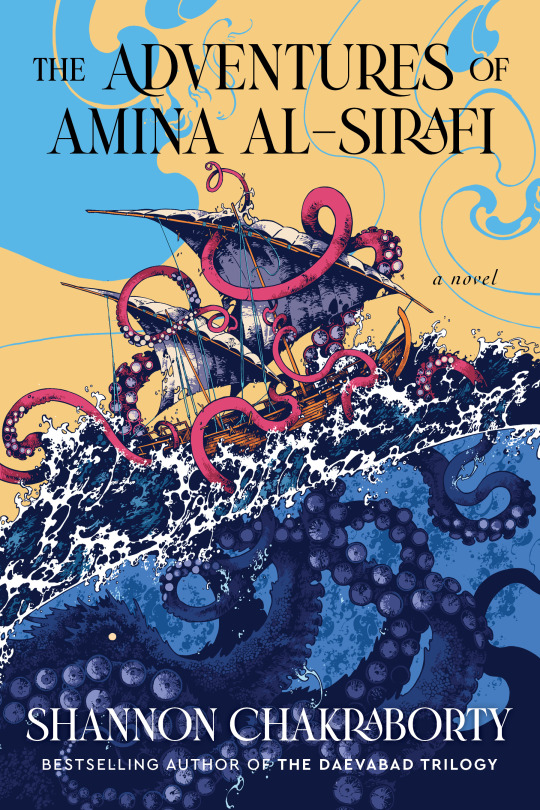
MY 12 FAVOURITE BOOKS OF 2023!
I have a journal where I keep track of the books I've read throughout the year! These were the favourites of each month from January to December of 2023!
___
What were some of your favourite books in 2023?
___
Lessons in Chemistry by Bonnie Garmus
Fairy Tale by Stephen King
The Summer of Broken Rules by K.L. Walther
Meet Me Halfway by Lilian T. James
The Story of Us by Catherine Hernandez
Swimming in the Dark by Tomasz Jedrowski
Yellowface by R.F. Kuang
Imogen, Obviously by Becky Albertalli
Hotline by Dimitri Nasrallah
Time to Shine by Rachel Reid
Hello Beautiful by Ann Napolitano
The Adventures of Amina al-Sirafi by Shannon Chakraborty
___
Happy reading!
#Favourite books#2023 reading#books#read#reading#booklr#bookish#features#bookworm#bookaholic#book blogger#book blog#on books#on reading#book list#best books 2023#my opinion#my reading#readers of tumblr#books and reading#books and literature#books and novels#Bonnie Garmus#Stephen King#K.L. Walther#Lilian T. James#Catherine Hernandez#Tomasz Jedrowski#R.F. Kuang#Becky Albertalli
11 notes
·
View notes
Text
Deutschribing Germany
Literature
Middle Ages (5th-15th centuries)
Medieval German literature can be divided into two periods: Old High German literature (8th-11th centuries) and Middle High German literature (12th-14th centuries). The only surviving works from the first period are the Hildebrandslied (Lay of Hildebrand), which is the earliest poetic text in German and tells of the tragic encounter in battle between a father and a son, and Muspilli, which deals with the fate of the soul after death and at the Last Judgment.

Middle High German literature saw a 60-year golden age known as mittelhochdeutsche Blütezeit, in which lyric poetry in the form of Minnesang—the German version of courtly love—blossomed thanks to poets such as Walther von der Vogelweide and Wolfram von Eschenbach. Another important genre during this time was epic poetry, of which the most famous example is the Nibelungenlied (The Song of the Nibelungs), which narrates the story of prince Siegfried and princess Kriemhild, among other characters.
Renaissance (15th-16th centuries)
Early New High German literature includes works such as Der Ring (The Ring) by Heinrich Wittenwiler, a 9,699-line satirical poem where each line is marked with red or green ink depending on the seriousness of the material, and Das Narrenschiff (Ship of Fools) by Sebastian Brant, a satirical allegory that contains the ship of fools trope.
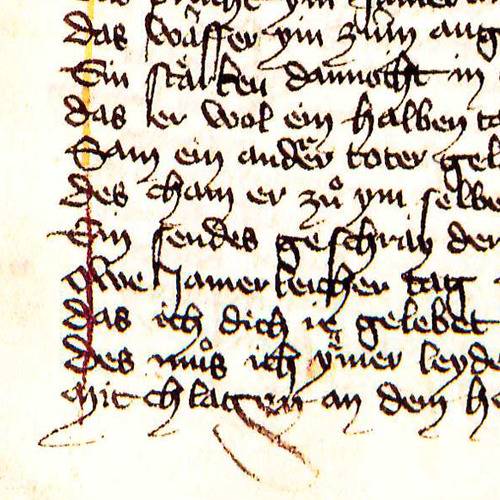
Other important authors are satirist and poet Thomas Murner, humanist Sebastian Franck, and poets Johannes von Tepl and Oswald von Wolkenstein.
Baroque (16th-17th centuries)
The Baroque period is characterized by works that reflected the experiences of the Thirty Years’ War and tragedies (Trauerspiele) on Classical themes, the latter were written by authors such as Andreas Gryphius and Daniel Caspar von Lohenstein. The most famous work is Der abenteuerliche Simplicissimus (Simplicius Simplicissimus) by Hans Jakob Christoffel von Grimmelshausen, a picaresque novel that narrates the adventures of the naïve Simplicissimus.
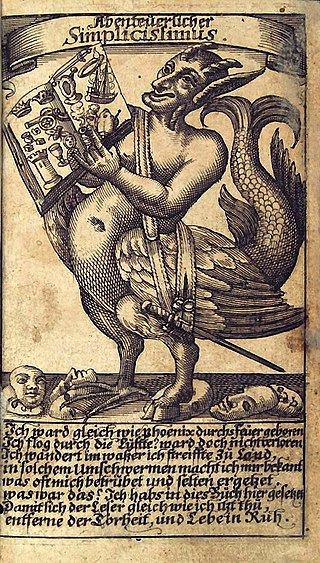
Enlightenment (17th-18th centuries)
The most important writers of the Enlightenment are Christian Felix Weiße, Christoph Martin Wieland, Gotthold Ephraim Lessing, and Johann Gottfried Herder.
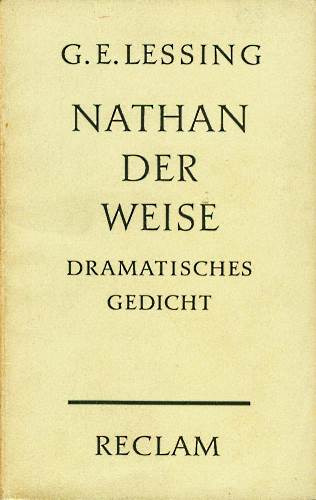
The Age of Reason saw the emergence of two literary movements: Empfindsamkeit (sentimental style) and Sturm und Drang (storm and stress). The first one intended to express true and natural feelings and featured sudden mood changes. The latter movement was characterized by individual subjectivity and extremes of emotion in response to the rationalism imposed by the Enlightenment.
Weimar Classicism (18th-19th centuries)
The main drivers behind Weimar Classicism, which synthesized ideas from Classicism, the Enlightenment, and Romanticism, were Johann Christoph Friedrich von Schiller, and Johann Wolfgang von Goethe.
During this period, Schiller published Die Bürgschaft (The Pledge), a ballad based on the legend of Damon and Pythias found in the Latin Fabulae, and Don Karlos (Don Carlos), a historical tragedy about Carlos, Prince of Asturias, while Goethe wrote Egmont, a play heavily influenced by Shakespearean tragedy, and Faust, a tragic play in which the main character sells his soul to the devil that is considered the greatest work of German literature.
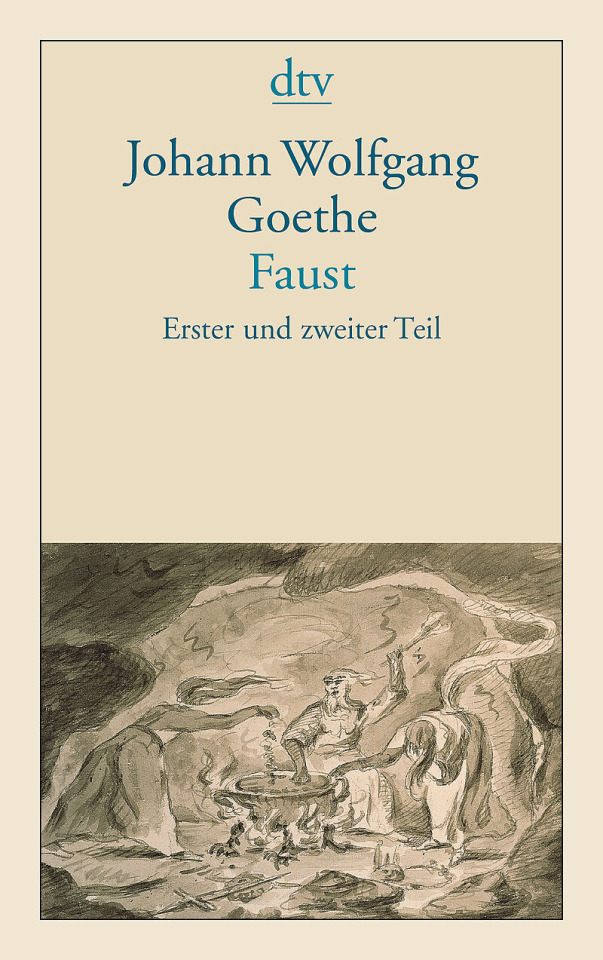
Romanticism (18th-19th centuries)
Important Romantic writers include E. T. A. Hoffmann, author of Der Sandmann (The Sandman), a short story based on the mythical character of said name that puts people to sleep by sprinkling sand on their eyes; Heinrich von Kleist, who wrote Das Kätchen von Heilbronn (The Little Catherine of Heilbronn), a drama set in Swabia in the Middle Ages; Joseph Freiherr von Eichendorff, author of Das Marmorbild (The Marble Statue), a novella about a man who struggles to choose between piety and a world of art, and Novalis, author of Hymnen an die Nacht (Hymns to the Night), a collection of six poems.

Folk tales collected by the Brothers Grimm became very popular during the Romantic period, as they represented a pure form of national literature and culture.
Biedermeier and Young Germany (19th century)
The Biedermeier period contrasts with the Romantic era and is best exemplified by poets Adelbert von Chamisso, Annette von Droste-Hülshoff, and Wilhelm Müller.
Young Germany was a youth movement whose main proponents were Karl Gutzkow, Ludolf Wienbarg, and Theodor Mundt.
Realism and Naturalism (19th century)
The most representatives realist authors are Gustav Freytag, Theodor Fontane, and Theodor Storm, while Gerhart Hauptmann was the most important naturalist writer.
Weimar literature (20th century)
During the Weimar Republic, writers such as Erich Maria Remarque, Heinrich Mann, and Thomas Mann presented a bleak look at the world and the failure of politics and society.

Expressionism (20th century)
As a modernist movement, Expressionism presented the world solely from a subjective perspective, distorting it for emotional effect. Famous authors include novelists Alfred Döblin and Franz Kafka, playwrights Ernst Toller and Georg Kaiser, and poets August Stramm and Else Lasker-Schüler.

Neue Sachlichkeit (20th century)
Neue Sachlichkeit (New Objectivity) arose as a reaction against expressionism and was characterized by its political perspective on reality and portrayal of dystopias in an emotionless reporting style, showing cynicism about humanity. Authors associated with this movement include Erich Kästner, Hans Fallada, and Irmgard Keun.
Nazi Germany (1933-1945)
During the Nazi regime, some authors went into exile, while others submitted to censorship. The former, who either were of Jewish ancestry or opposed the regime for political reasons, include writers Alice Rühle-Gerstel and Anna Seghers, playwright Bertolt Brecht, and poet and novelist Hermann Hesse/Emil Sinclair.
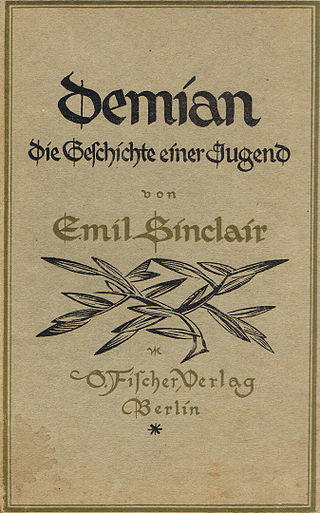
Those who stayed and engaged in inner emigration include writer Friedrich Reck-Malleczewen, poet and essayist Gottfried Benn, writer Hans Blüher, and poet and novelist Ricarda Huch.
Post-war literature (20th century)
The most famous authors in West Germany were Edgar Hilsenrath, Günter Grass, Heinrich Böll, and Group 47, a group of participants in writers’ meetings invited by Hans Werner Richter.
East German writers include Christa Wolf, Heiner Müller, Reiner Kunze, and Sarah Kirsch.
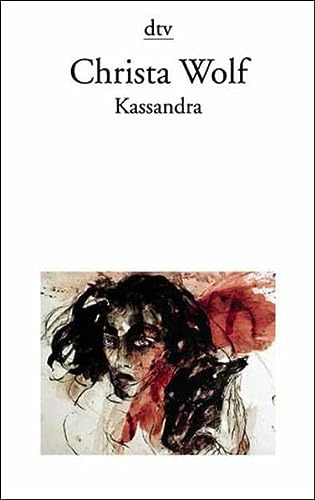
Contemporary literature (21st century)
Fantasy and science fiction authors include Andreas Eschbach, Frank Schätzing, and Wolfgang Hohlbein. Some of the most important poets are Aldona Gustas, Hans Magnus Enzensberger, and Jürgen Becker. Thriller is best represented by Ingrid Noll. Fiction novelists include Herta Müller, Siegfried Lenz, and Wilhelm Genazino.
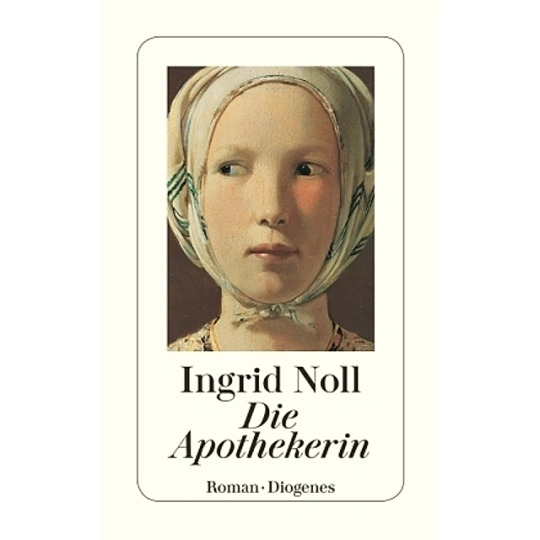
20 notes
·
View notes
Note
Catherine's Zara earrings are so pretty! So much for "Sayonara Zara" amirite? And the black opera gloves lend the entire look an air of slightly menacing mystery, like "Back off beyotch. I'm a Bond Girl, and I'm carrying a Walther PPK pistol in this black clutch."
I am ready to see everyone wearing opera gloves as the next big fashion it item!
22 notes
·
View notes
Text
Catherine Hokin is interviewed by Elise Cooper
The Secretary by Catherine Hokin is a gripping novel spanning four decades. It has a dual timeline covering Germany during WWII and East Berlin after the war. Throughout the book readers will wonder would they be brave like the two heroines or remain a neutral bystander? Did the heroines take enough action, or should they have done more?
Magda Aderbach became the personal assistant to factory owner Walther Tiedemann, reminding readers of Oskar Schindler who saved Polish-Jewish refugees from the Holocaust. Because of her efficiency Magda impresses Heinrich Himmler, the leader of the SS and architect of the Holocaust, and she volunteers to be his secretary. She leads a dual life, pretending to enjoy hob-nobbing with the powerful Nazis, but also working for the resistance because she hates the Nazis and what they stand for. She smuggles reports, forges documents, arranges fake IDs to smuggle Jews out of Germany, and has organized safe houses for the Jews as well.
Fast forward forty years where Magda now lives in East Berlin, behind the Berlin Wall with her daughter, her husband, and her granddaughter, Nina Dahlke. Both Magda and Nina have similar personality traits, wanting to fight injustice, although the granddaughter is more impulsive and a lot less cautious. Beyond that, Nina does not understand why her grandmother is so secretive about her life in Germany during WWII. She knows there is a house in question, that was once lived in by Magda, but there are secrets involved with that house, and more secrets that Magda has kept to herself. After the Wall falls, Nina takes a journey to West Berlin to find the Tower House, hoping to trace her family’s history in the ruins of the past her grandmother ran from. But, when she finally finds the abandoned house, she finds out who owned the house, and wonders if her grandmother had a dual life, seeing pictures of her with Himmler. To make matters worse, Nina meets Elsa, the former wife of an SS officer, who lies and tries to pin her atrocities on Magda.
What the author does brilliantly is show parallels and similarities between the Nazi regime and the Communists control of East Berlin, the Stasis. As with both regimes there were spies everywhere, no freedom, a life lived under guards and rifles, terrible atrocities, and inhuman behavior where there was oppression, imprisonment, and killings. Readers understand the heroism of Magda and Nina as they were brave enough to stand up to tyranny even if it meant a harsh imprisonment or execution. Once the wall falls, the two worlds of Nina and Magda collide in a major revelation.
This novel is riveting throughout. Readers will not be able to put the book down, wanting to find out how the stories end for both Nina and Magda. The portrayals of these characters who must make impossible choices will keep people on the edge of their seats. A bonus is the history sprinkled throughout the novel.
Elise Cooper: Did you get the idea from The Lost Mother?
Catherine Hokin: This book follows my previous novel, The Lost Mother, since it is still in Germany, this time after WWII. I also spent a lot of time in Berlin. They have a wonderful museum dedicated to the heroes of the silent resistance. What interests me is what happened because of WWII.
EC: What was your experience like when you went to Germany?
CH: I come from a tiny village in England. When I was seventeen, I went there and saw the wall, in about 1979. I never have seen people with machine guns. I spoke with a local woman who told me that her sister lived in East Berlin, and she has not seen her in over twenty years. The wall went up overnight and if someone was caught on the other side that was it. My mind fast-forwarded to this story. There are a lot of flash points for me which I write about in my books.
EC: Did the book have similarities between Communists and the Nazis?
CH: They both were oppressive, used surveillance, and censorship, controlling people’s lives and minds. I did the comparison intentionally. I find it fascinating how in a short period of time society moved from one dictatorship to another. When East Germany was born there was hope behind it, but it turned into something people had fought to get rid of, such as the genocide.
EC: How did you do the research?
CH: I read a huge number of books, spent a lot of time in London’s Holocaust Library, and saw on the Internet people who told their stories. With every book I spent six months of research to understand the nuance.
EC: How would you describe Magda?
CH: She is reliable, steady, impulsive, loyal, brave, and chose to fight injustice. But I do not think she realizes the scale of what was the cost of her involvement. She has a naïve view that she can stand up to the Nazis who she worked with. Magda questions if she did enough? She did arrange escape routes and wrote reports, forging IDs, and had safe houses.
EC: Magda’s saving of Jews-was it based on reality?
CH: Yes. About 6000 Jews survived in hiding in Berlin. People found them a cellar to hide in and had them move around. I even put in a scene where Magda tried to go back out to help more. I wanted to show how the Nazis treated the Jews.
EC: How would you describe Nina?
CH: I felt a kinship with her. I was a lot like her. She felt she did not fit in her world. She fought back although clumsily, putting others at risk. Nina is a feisty character. To write the scenes where she was imprisoned, I spent a lot of time at the Hohenschonhausen Prison in East Berlin, a horrible place. She is spunky, innocent, conflicted, and hot-headed. She did not have choices and control over her life. After the Wall came down, she felt alienated.
EC: What was the role of Elsa in the story?
CH: She is horrible, hard, vicious, dangerous, and cruel, an adversary of Magda. I wrote her to show how someone during those times was immersed in the Nazi life. She loved the lifestyle. Elsa was caught up in the cause and jealous of Magda. Elsa liked being in control of the chess board, pulling people’s strings.
EC: Next books?
CH: This is the third book published by Grand Central in the US. I have written seven books, the seventh one coming out this month in the UK. People can get any of my books in E format in the states. I also write a series where the third book comes out in the UK in January. The series is about a photographer and a Jewish detective, taking place from 1933 to 1963, set in Berlin and Prague. The first two books involve serial killers, taking revenge on what happened to them. The fourth book in the series comes out in May. Each book has crimes that came of WWII.
THANK YOU!!
0 notes
Text
Quinoa recipes

#Quinoa recipes skin#
After toppling the Incan empire in 1532, the Spanish conquistador filled his ships with potatoes and corn-destining them to become major players in the European diet-while leaving a third crop to wither. To obtain the most accurate nutritional information in a given recipe, you should calculate the nutritional information with the actual ingredients used in your recipe, using your preferred nutrition calculator.Francisco Pizarro might have known a thing or two about New World conquest, but he would have made a lousy nutritionist. Furthermore, different online calculators provide different results depending on their own nutrition fact sources and algorithms. Varying factors such as product types or brands purchased, natural fluctuations in fresh produce, and the way ingredients are processed change the effective nutritional information in any given recipe. Although I do my best to provide accurate nutritional information, these figures should be considered estimates only. The data is calculated through an online nutritional calculator,. Nutritional information is offered as a courtesy and should not be construed as a guarantee. I am not a certified nutritionist and the nutritional data on this site has not been evaluated or approved by a nutritionist or the Food and Drug Administration. This website is written and produced for informational purposes only.
Raw Asparagus Salad with Almonds & Ginger-Sesame Vinaigrette.
Whisk until the sugar is dissolved.Ĭombine the quinoa with the dressing, vegetables and fresh herbs. Next, make the dressing by combining the fresh lime juice (no bottled stuff!), sugar, vegetable oil, red pepper flakes and fish sauce in a small bowl. Slice the red pepper into bite-sized pieces, thinly slice the scallions and shred the carrot. They’re sometimes called seedless cucumbers but you still need to seed them, otherwise, they’ll make your salad watery.
#Quinoa recipes skin#
While the quinoa cooks, prepare the vegetables.įor the cucumbers, I like to use English (or hothouse) cucumbers because the skin is edible and you don’t need to peel them. You’ll know it’s done when the little white “tails” sprout from the grains. Turn the heat down to a simmer, cover the pan and cook until the quinoa is done, about 15 minutes. Simply combine the water, salt and quinoa is a pan and bring to a boil. The ideal ratio is 1 cup of quinoa to 1-2/3 cups of liquid. The key to success is not following the package instructions, which always call for too much liquid and result in mushy quinoa. And don’t worry about buying a large bottle - it keeps forever.īegin by cooking the quinoa. If possible, buy a brand imported from Thailand or Vietnam. Contrary to what you might expect, it doesn’t add a “fishy” taste to foods at all, but rather a salty, savory flavor. Most large supermarkets carry it in the Asian section and you can always find it at Whole Foods or Asian markets. It’s a dark, pungent liquid used in Southeast Asian cooking. It looks like couscous and is eaten like a grain, but it’s actually a cousin of spinach, Swiss chard, and other leafy greens.įish sauce is also fairly easy to find. It’s a high protein seed that has a fluffy, slightly crunchy texture. Quinoa (pronounced keen-wah) has become mainstream in the past few years and is available at most large supermarkets. The ingredients are pretty straightforward. What you’ll need to make Thai Quinoa Salad I usually make it as a light lunch, but you can also serve it alongside other Asian dishes for dinner - or make it a meal in itself by adding cooked shrimp, crab or lobster. It’s a healthy eater’s dream: flavorful, chock-full of protein and veggies, satisfying, and low in fat. This vibrant and fresh Thai Quinoa Salad is adapted from one of my favorite cookbooks, Raising the Salad Bar by Catherine Walthers. This flavorful Thai quinoa salad is a healthy eater’s dream!

0 notes
Photo

Steamed Pot Stickers with Bok Choy
Don’t be intimidated by making pot stickers. They are quite easy. The filling takes minutes to make and wrapping them not much longer. You can purchase a dipping sauce, either a sweet chili sauce or a soy-based dipping sauce such as Ponzu, found in the Asian section of supermarkets. Serves 4 as a side dish.
Ingredients
2 Tbsp canola oil, divided
1 Tbsp finely minced fresh ginger (a Microplane grater works nicely)
1 cup shredded carrots
2 cups finely chopped bok choy (both green and white parts)
18–20 small wonton wrappers
Soy sauce, to taste
Dipping sauce
Directions
1. In a skillet over medium-low heat, add 1 tablespoon canola oil, fresh ginger, and carrots. Sauté 2 to 3 minutes, stirring often. Add bok choy, turn the heat to medium-high, and sauté until slightly wilted, 2 to 3 minutes more. Stir in a few splashes of soy sauce and place in a colander to drain any excess moisture.
2. To form a dumpling, place 1 wonton wrapper on a cutting board. Brush the edges lightly with water, using a pastry brush or your fingers. Place 1 or 2 teaspoons of bok choy mixture into the center. Folder over one side to the other to form a triangle. Press edges together firmly to seal. With the long edge of the triangle facing you, pull the two ends (at 3 o’clock and 9 o’clock) together over the center and press them together to seal. Form the remainder of the wontons until the filling is used.
3. To cook, add 1 tablespoon oil to a large skillet with a lid over medium-high heat. Place as many pot stickers as will fit, and sauté lightly on both sides, uncovered, until golden brown, 1 to 2 minutes. When the second side is sautéed, add 1/2 to 1 cup water, cover, and steam the pot stickers for 2 to 3 minutes.
4. Serve hot with a dipping sauce of your choice.
0 notes
Photo



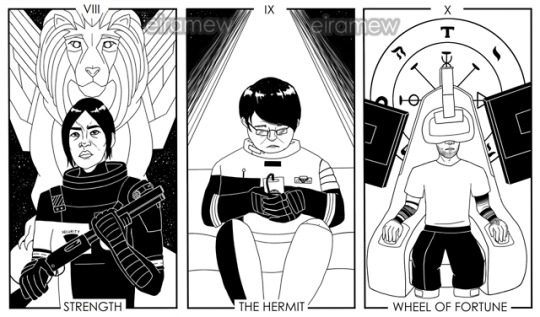


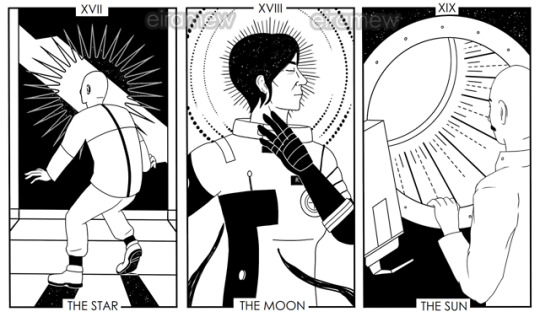

PREY TAROT CARDS - MAJOR ARCANA
This was one of the biggest projects I’ve ever worked on!
♥
#prey#prey tarot cards#prey 2017#prey mooncrash#prey game#andrius alekna#morgan yu#riley yu#catherine yu#william yu#danielle sho#abbigail foy#vijay bhatia#sarah elazar#alex yu#mikhaila ilyushin#dayo igwe#walther dahl#joan winslow#claire whitten#aaron ingram#will mitchel#january#typhon morgan#tarot#tarot deck#My art
444 notes
·
View notes
Text
Prey, Highschool Teacher AU. Prey Week
I’ve had this AU idea stuck in my head now for a couple of days, but I’ve been too lazy to write it out, so now I finally felt like doing it. Sorry for any and all grammatical and spelling errors. I’m not really good at writing.
•Alex Yu is the principal of a highschool that is highly praised for having some of the best testing scores in the world, Transtar Highschool.
•Alex is very concerned for his younger sibling because Morgan seems to be drifting away from him and losing interest in the goals of the school.
•Morgan Yu is vice principal, but often doesn’t act like it. A lot of the students think He/she is cool, unlike Alex. Morgan often forgets what he/she is supposed to be doing. He/she is low key dating a local mechanic that is hired to fix broken circuitry and stuff around the campus.
•January is Morgan’s self created, smart AI, phone because he/she is constantly forgetting things and usually needs directions, reminders, etc. Morgan doesn’t want anyone knowing about January.
•Morgan has trashed atleast three other AI’s due to them always giving false directions/reminders or just constantly crashing.
•Jason Chang is Morgan’s assistant. He has a huge crush on morgan, and enjoys working for him/her.
•Both William and Catherine Yu are on the school board of education. They both hold Alex and Morgan to high standards for running the school, and aren’t afraid to get them removed from their positions if they think they can’t handle it.
•Mikhaila Ilyushin is a local mechanic. She has a friend at the school who continuesly breaks stuff so she can constantly get hired and investigate the disappearance of her father who went missing after volunteering for a blood drive at the school.
•During her time there she develops a crush for Morgan Yu. Eventually she finds out that the feeling is mutual and they end up dating.
•Danielle Sho is the overseer of the school’s wifi network and works with a friend, Zachary West. She honestly hates working for this school. She’d rather be at her old job as the lead singer for a band rather than this, but it pays well so she’s fine with that.
•Danielle often talks shade about coworkers with her friend, Skye Braxton.
•One day Danielle notices Zachary talking to this cute janitor. She asks him who she is. Zachary tells Danielle that she is, Abigail Foy, a friend of his from his dnd group.
•Danielle eventually gets the courage to talk to Abby, and develops a relationship with her. Abby then invites Danielle to join her dnd group. That’s where she also meets Elias Black and Emma Beatty.
•Elias Black is one the school’s security officers. He’s also a huge nerd when it comes to dnd.
•Emma Beatty is one of the school’s P.E. teachers. She often also tries to get her fellow coworkers to exercise and stay healthy (mostly Alex).
•Sarah Elazar is the head of security at the school. She doesn’t feel like school security is taken as serious as it should be. She’s always concerned for everyone’s well-being and takes her job seriously.
•Dayo Igwe is one of the top science teachers in the school. He believes that Alex Yu is usually right when it comes to managing the school. He practically admires Alex.
•Walther Dahl is an inspector for the board of education. He is also ex military. He often intimidates the employees of Transtar Highschool, and finds this entertaining.
•Jada Marks is the most experienced bus driver at the school. She often refers to herself as Captain. This has caught on, and now everyone calls her Captain Marks. All of the other bus drivers think of her as their leader.
•Will Mitchell is the head “chef” at the highschool. The food is mostly just frozen so Will and the other cafeteria workers just reheat it. Will actually becomes a good friend of Morgan’s.
•Morgan actually made Will an AI buddie on his phone to cheer him up because he usually felt lonely or depressed while working. Will named it Skillet.
•Danielle wasn’t impressed or amused by Skillet.
•Lorenzo Calvino is the oldest of the teachers at the school, and his age is finally starting to mess with him. He’s starting to hallucinate a bit.
•Miyu Okabe is a student teacher who works under Lorenzo, and honestly cares for him.
•Mathias Kohl is one of the school’s councilers. Nobody actually likes him, or interacting with him.
That’s all I have for now. Feel free to add on if you want.
#prey 2017#preyweek#prey au#my post#ideas#morgan yu#alex yu#william yu#catherine yu#mikhaila ilyushin#jason chang#janurary#danielle sho#abigail foy#sarah elazar#dr. igwe#walther dahl#will mitchell#elias black#zachary west#emma beatty#skye braxton#jada marks#skillet#larenzo calvino#miyu okabe#mathias kohl#wholy shit that was a lot of tags for names#lol
73 notes
·
View notes
Text
NAME PREDICTIONS FOR 2021 ROYAL (AND ROYAL-ADJACENT) BABIES
Princess Eugenie and Jack Brooksbank
So for a little girl, I’m thinking florals. I’m thinking older, yet still fashionable, names. I’m thinking Violet, I’m thinking Dora, I’m thinking Eleanor, I’m thinking Florence.
Violet Elizabeth Eleanor Rose
Violet Anne Elizabeth
Dora (Isadora?) Elizabeth Mary
Margaret Elizabeth Rose
For a boy, I’m thinking Andrew basic boys names. I’m thinking James. I’m thinking Jasper. I’m thinking Oscar. I’m thinking Harold. I’m thinking if a grandchild of Philip doesn’t use his name soon I’m going to riot.
James Philip William Andrew
Jasper Andrew Philip Charles
Oscar Philip George
James Arthur Charles Edward
Pippa Middleton and James Matthews
This is cheating because Pips isn’t a royal but she did give Arthur a very royal name. For a girl, I’m thinking classic and royal-adjacent names. I’m thinking Elizabeth. I’m thinking Grace. I’m thinking Delilah. I’m thinking Alice. I’m thinking Catherine would be in a girls’ name somewhere.
Elizabeth Catherine Grace
Delilah Elizabeth Mary
Alice Isabelle Rose
Grace Elizabeth Adelaide
For a boy, I’m going for the same vibe, but they’ve used a lot of family boy names by now so I’m going for James. I’m going for David. I’m going for Edward. I’m going for Alexander.
Edward James Alexander
David James Francis
James Spencer Alexander
Zara and Mike Tindall
Will we break the streak of Phillips’ girls? I’m thinking Ava. I’m thinking I would be shocked if it wasn’t Ava. I’m thinking short, sweet names. I’m thinking Arya/Aria. I’m thinking Ella. I’m thinking Ivy (I know I went off brand there)
Ava Rose Tindall
Ella Rose Tindall
Clara Anne Tindall
Freya Rose Tindall
For a boy, I’m thinking Philip. I will manifest my baby with a Philip in his name, Louis Arthur Charles. I’m thinking short names. I’m thinking not Finn because it doesn’t sound right with Tindall. I’m thinking Theo. I’m thinking Beau. I’m thinking Rowan. I’m thinking Lucas.
Theo Philip Tindall
Lucas Philip Tindall
Philip Rowan Tindall
Theo Charles Tindall
Princess Sofia and Prince Carl Philip
I’m purely basing this off what sounds vaguely Swedish and good with Alexander and Gabriel. I’m thinking Freya for a girl. I’m thinking Emilia/Amilia/Mila. I’m thinking Mathilda. I’m thinking Astrid/Ingrid.
Freya Ingrid Silvia Britt
Emilia Renate Marie
Mathilda Renate Lilian Marie
Ingrid Silvia Marie
For a boy, I’m thinking Theo/Theodor/Theodore. I’m thinking Raphael. I’m thinking Julian. I’m thinking Noah.
Theodor(e) Oscar Folke
Theodor(e) Edmund Philip Walther
Julian Oscar Frederik
Raphael Walther Gustaf
59 notes
·
View notes
Text
MASTERPOST
Categorías:
Dibujo
Pintura
Escultura
Cine
Arquitectura
Animación
Concept art
Ilustración
A
Tomma Abts
Lawrence Abu Hamdan
Franz Ackermann
Richard Aldrich
Brian Alfred
Francis Alys
Kai Althoff
Yoshitaka Amano
Ghada Amer
Even Amundsen
Hurvin Anderson
Richard Anderson
Wes Anderson
Tadao Ando
Ida Applebroog
Juan Araujo
Tauba Auerbach
Laurel Austin
Michael J. Austin
B
Andrew Baker
John Baldessari
Antonio Ballester Moreno
Matthew Barney
Darren Bartley
Georg Baselitz
James Baxter
Carole Benzaken
Cesar Biojo
Benjamin Björklund
Aaron Blaise
Rob Bliss
Michael Borremans
Lisa Brice
Cecily Brown
Glenn Brown
Borja Buces Renard
Bernard Buffet
Rafal Bujnowski
C
Ricardo Cabral
Varda Caivano
Francisco Calvelo
Brian Calvin
Helen Cammock
Gonzalo Cárcamo
Gillian Carnegie
Merlin Carpenter
Maurizio Cattelan
Gigi Cavenago
Vija Celmins
Zeen Chin
Chuck Close
James Coleman
Philipp Comarella
Iris Compiet
Sarah Crowner
Ángela de la Cruz
John Currin
Amy Cutler
D
Henry Darger
Ian Davenport
Noah Davis
Philippe Decrauzat
Benjamin Degen
Dominik Derow
Rineke Dijkstra
John Dilworth
Markus Döbeli
Peter Doig
Kaye Donachie
Pierre Dorion
Vladimir Dubossarsky
Marlene Dumas
Geirrod Van Dyke
E
Cecilia Edefalk
Thomas Eggerer
Tim Eitel
Franz Erhard Walther
Marco Espinosa
F
Helmut Federle
Roberto Ferri
Eric Fischl
Tom Fox
Moby Francke
Lucian Freud
Bernard Frize
Michael Fullerton
G
Julio Galan
Jorge Galindo
Ellen Gallagher
Fran Garcés
Mario García Torres
Tim Gardner
Jennifer Gennari
Nikolay Georgiev
Kim Jung Gi
Geng Gianyi
Ari Gibson
Wanjin Gim
Wayne Gonzales
Katharina Grosse
Mark Grothan
James Gurney
Wade Guyton
H
Peter Halley
Josephine Halvorson
James B. Ham
Peter Han
N. S. Harsha
Eberhard Havekost
Mary Heilmann
Sophie von Hellerman
Lubaina Himid
Mah Hirano
Damien Hirst
Howard Hodgkin
Gary Hume
Jackqueline Humphries
Steve Huston
I
Callum Innes
Toyo Ito
Eliza Ivanova
J
James Jean
Ruan Jia
Chantal Joffe
Chris Johanson
Jama Jurabaev
Yishai Jusidman
K
Johannes Kahrs
Alex Kaneuski
Jacob Kassay
Alex Katz
Kurt Kauper
Anselm Kiefer
Karen Kilimnik
Martin Kippenberger
R. B. Kitaj
Martin Kobe
Jutta Koether
Ayami Kojima
Satoshi Kon
Peter Konig
Alex Konstad
Karl Kopinski
Kekai Kotaki
Elke Krystufek
Kengo Kuma
Stefan Kürten
L
Studio Laika
Jim Lambie
Maria Lassnig
Sol LeWitt
Songsong Li
Wanjie Li
Fang Lijun
Michael Lin
Dela Longfish
Rael Lyra
M
Jorge Macchi
Marcin Maciejowski
Elizabeth Magill
Michael Majerus
Victor Man
Finnian MacManus
Margherita Manzelli
Marta Marcé
Louis de Masi
I Nyoman Masriadi
Gbariele di Matteo
Leonard McComb
Crash McCreery
Ian McKeever
Lucy McKenzie
Jonathan Meese
Julie Mehretu
Beatriz Milhazes
Yue Minjun
Steve Mitchell
Moebius
Dianna Molzan
Baran Mong
Guillermo Mora
Sarah Morris
Justin Mortimer
Olivier Mosset
Hamoudi Moussa
Craig Mullins
Muntean/Rosenblum
Haruki Murakami
Oscar Murillo
Catherine Murphy
Ishbel Myerscough
N
Yutaka Nakamura
Yusuke Nakano
Yoshitomo Nara
Shirin Neshat
Ernesto Neto
Yasushi Nirasawa
Guillaume Normand
Kazuya Nuri
O
Albert Oelhen
Kazuo Oga
Julien Opie
Silke Otto-Knapp
Karla Ortiz
P
Blinky Palermo
Philip Pearlstein
Stuart Pearson Wright
Enoc Perez
Burno Perramant
Raymond Pettibon
Elizabeth Peyton
Richard Philipps
Lari Pitman
Sigmar Polke
Richard Powell
Richard Prince
Charlotte Prodger
Vitaly Pushnitsky
Q
R. H. Quaytman
Joe Quesada
R
Neo Rauch
Blake Rayne
Paula Rego
Carol Rhodes
Daniel Richter
Gerhard Richter
Matthew Ritchie
Paul Robertson
Scott Robertson
Clare Rojas
Georges Rousse
Royal Art Lodge
Nick Runge
Robert Ryman
S
Vyacheslav Safronov
Andrew Salgado
David Salle
Dennis Sarazhin
Juliao Sarmento
Wilhelm Sasnal
Jenny Saville
Adrian Schiess
David Schnell
Maaike Schoorel
Max Schulz
Sean Sevestre
Tai Shani
George Shaw
Kate Shepherd
Mª José Sicilia
Shazia Sikander
Amy Sillman
Dirk Skreber
Sylvia Sleigh
Matt Smith
Glenn Sorensen
SPA Studios
Hito Steyerl
Sturtevant
Ken Sugimori
T
Tatsuyuki Tanaka
Furio Tedeschi
Mark Tennant
Francisco Toledo
Robbie Trevino
James Turrell
Luc Tuymans
U
Nicolás Uribe
V
Adriana Varejao
Max Verehin
Ángel Vergara
Pieter Vermeersch
Jack Vettriano
Glenn Vilppu
Bill Viola
W
Takumi Wada
Kara Walker
Corinne Wasmuht
Steve Wang
Jonathan Wateridge
Alison Watt
Jeff Watts
Robert Watts
Matthias Weischer
Morgan Weistling
Wendy White
Terryl Whitlatch
Richard Williams
Sue Williams
Christopher Wool
X
Zhang Xiaogang
Y
Santiago Ydañez
Lynette Yiadom-Boakye
Yoh Yoshinari
Donglu Yu
Liang Yuanwei
Lisa Yuskavage
Z
Luiz Zerbini
Su Zhang
Feng Zhu
65 notes
·
View notes
Photo
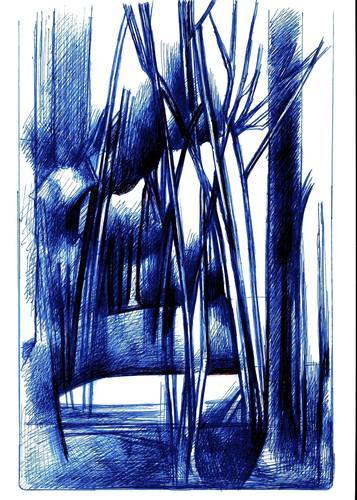
- SOLD - Swamp Forest, Collection: S. Ribbe,, Wolfgang Schmidt
Swamp Forest - Sumpfwald Sincerely to: Andy Hall, Sheikha Al Mayassa bint Hamad bin Khalifa Al-Thani, Paul Allen, Edythe L. and Eli Broad, Rosa and Carlos de la Cruz, Patricia and Gustavo Phelps de Cisneros (Venezuela and Dominican Republic), Donald and Mera Rubell, Steven A. Cohen, Theo Danjuma, Maria Baibakova, Adrian Cheng, Ingvild Goetz (München), Victoria and David Beckham, Leonardo Dicaprio, Alan Lau, Camilla Barella, Ralph DeLuca, Arthur de Ganay, Ramin Salsali, Moises Cosio, Pedro Barbosa, Monique and Max Burger, Joaquin Diez-Cascon, Luciano Benetton, Roman Abramovich and Dasha Zhukova (Russia), Robbie Antonio (Philippines), Hélène and Bernard Arnault (France), Maria and Bill Bell (United States), Peter Benedek (United States), Debra and Leon Black (United States), Christian and Karen Boros (Germany), Irma and Norman Braman (United States), Peter Brant (United States), Basma Al Sulaiman, Marc Andreessen, Laura and John Arnold, Camilla Barella, Swizz Beatz, Claudia Beck, Andrew Gruft, Robert and Renée Belfer, Lawrence Benenson, Frieder Burda (Germany), Richard Chang (United States), Kim Chang-il (Korea), David Chau and Kelly Ying (China), Pierre T.M. Chen (Taiwan), Adrian Cheng (China), Kemal Has Cingillioglu (United Kingdom), Nicolas Berggruen, Jill and Jay Bernstein, Ernesto Bertarelli, James Brett, Jim Breyer, Christian Bührle, Valentino D. Carlotti, Edouard Carmignac, Trudy and Paul Cejas, Dimitris Daskalopoulos (Greece), Zöe and Joel Dictrow (United States), George Economou (Greece), Alan Faena (Argentina), Mark Falcone and Ellen Bruss (United States), Amy and Vernon Faulconer (United States), Howard and Patricia Farber (United States), Larry and Marilyn Fields (United States), Marie Chaix, Michael and Eva Chow, Frank Cohen, Michael and Eileen Cohen, Isabel and Agustín Coppel, Anthony D'Offay, Hélène and Michel David-Weill, Antoine de Galbert, Ralph DeLuca, Amanda and Glenn Fuhrman (United States), Danielle and David Ganek (United States), Ken Griffin (United States), Agnes Gund (United States), Steven and Kathy Guttman (United States), Andrew and Christine Hall (United States), Lin Han (China), Henk and Victoria de Heus-Zomer (Holland), Grant Hill (United States), Maja Hoffmann (Switzerland), Erika Hoffmann-Koenige (Germany), Tiqui Atencio Demirdjian, Beth Rudin DeWoody, Eric Diefenbach and JK Brown, David C. Driskell, Mandy and Cliff Einstein, Rebecca and Martin Eisenberg, Ginevra Elkann, Tim and Gina Fairfax, Dana Farouki, Michael and Susan Hort (United States), Guillaume Houzé (France), Wang Jianlin (China), Dakis Joannou (Greece), Alan Lau (China), Joseph Lau (China), Melva Bucksbaum and Raymond Learsy (United States), Agnes and Edward Lee (United Kingdom), Aaron and Barbara Levine (United States), Adam Lindemann (United States), Eugenio López (Mexico), Jho Low (China), Susan and Leonard Feinstein, Nicoletta Fiorucci, Josée and Marc Gensollen, Alan and Jenny Gibbs, Noam Gottesman, Florence and Daniel Guerlain, Paul Harris, Barbara and Axel Haubrok, Alan Howard, Fatima and Eskandar Maleki (United Kingdom), Martin Margulies (United States), Peter Marino (United States), Donald Marron (United States), David MartÍnez (United Kingdom and Mexico), Raymond J. McGuire (United States), Rodney M. Miller Sr. (United States), Simon and Catriona Mordant (Australia), Arif Naqvi (United Kingdom), Peter Norton (United States), Shi Jian, Elton John, Tomislav Kličko, Mo Koyfman, Jan Kulczyk, Svetlana Kuzmicheva-Uspenskaya, Pierre Lagrange, Eric and Liz Lefkofsky, Robert Lehrman, François Odermatt (Canada), Bernardo de Mello Paz (Brazil), José Olympio & Andréa Pereira (Brazil), Catherine Petitgas (United Kingdom), Victor Pinchuk (Ukraine), Alden and Janelle Pinnell (United States),Ron and Ann Pizzuti (United States), Michael Platt (Switzerland), Miuccia Prada and Patrizio Bertelli (Italy), Howard and Cindy Rachofsky (United States), Mitchell and Emily Rales (United States), Dan Loeb, George Lucas, Ninah and Michael Lynne, Lewis Manilow, Marissa Mayer, David Mirvish, Lakshmi Mittal, Valeria Napoleone, John Paulson, Amy and John Phelan, Ellen and Michael Ringier (Switzerland), David Roberts (United Kingdom), Hilary and Wilbur L. Ross Jr. (United States), Dmitry Rybolovlev (Russia), Lily Safra (Brazil),Tony Salamé (Lebanon), Patrizia Sandretto (Italy), Eric Schmidt (United States), Alison Pincus, Heather Podesta, Colette and Michel Poitevin, Thomas J. and Margot Pritzker, Bob Rennie, Craig Robins, Deedie and Rusty Rose, Stephen Ross, Alex Sainsbury, Alain Servais (Belgium), Carlos Slim (Mexico), Julia Stoschek (Germany), Budi Tek (Indonesia), Janine and J. Tomilson Hill III (United States), Trevor Traina (United States), Alice Walton (United States), Robert & Nicky Wilson (United Kingdom), Elaine Wynn (United States), Lu Xun (China), Muriel and Freddy Salem, Denise and Andrew Saul, Steven A. Schwarzman, Carole Server and Oliver Frankel, Ramin Salsali, David Shuman, Stefan Simchowitz, Elizabeth and Frederick Singer, Jay Smith and Laura Rapp, Jeffrey and Catherine Soros, Jerry Yang and Akiko Young (United States), Liu Yiqian and Wang Wei (China), Anita and Poju Zabludowicz (United Kingdom), Jochen Zeitz (South Africa), Qiao Zhibing (China), Jerry Speyer and Katherine G. Farley, Susana and Ricardo Steinbruch, Kai van Hasselt, Francesca von Habsburg, David Walsh, Artur Walther, Derek and Christen Wilson, Michael Wilson, Owen Wilson, Zhou Chong, Doris and Donald Fisher, Ronnie and Samuel Heyman, Marie-Josee and Henry R. Kravis, Evelyn and Leonard Lauder, Jo Carole and Ronald S. Laude, Francois Pinault (France), Udo Brandhost (Köln), Harald Falckenberg (Hamburg), Anna and Joseph Froehlich (Stuttgart), Hans Grothe (Bremen), UN Knecht (Stuttgart), Arendt Oetker (Köln), Inge Rodenstock (Grünwald), Ute and Rudolf Scharpff (Stuttgart), Reiner Speck (Köln), Eleonore and Michael Stoffel (Köln), Reinhold Würth (Niedernhall), Wilhelm and Gaby Schürmann, Ivo Wessel, Heiner and Celine Bastian, Friedrich Karl Flick, Monique and Jean-Paul Barbier-Mueller (Genf), Christa and Thomas Bechtler (Zürich), David Bowie (Lausanne), Ulla and Richard Dreyfus (Binningen und Gstaad), Georges Embiricos (Jouxtens and Gstaad), Friedrich Christian "Mick" Flick (Hergiswil and Gstaad), Esther Grether (Bottmingen), Donald Hess (Bolligen), Elsa and Theo Hotz (Meilen), Baroness Marion and Baron Philippe Lambert (Genf), Gabi and Werner Merzbacher (Zürich), Robert Miller (Gstaad), Philip Niarchos (St. Moritz), Jacqueline and Philippe Nordmann (Genf), Maja Oeri and Hans Bodenmann (Basel), George Ortiz (Vandoeuvres), Graf and Gräfin Giuseppe Panza di Biumo (Massagno), Ellen and Michael Ringier (Zürich), Andrew Loyd Webber, Steve Martin, Gerhard Lenz, Elisabeth and Rudolf Leopold.
https://www.saatchiart.com/art/Drawing-SOLD-Swamp-Forest-Collection-S-Ribbe/694205/2784259/view
7 notes
·
View notes
Text
Palästinalied - improvised introduction and theme (Walther Von Der Vogelweide) by Chris Ruebens
Live captation during Chris's solo concert during the Christopher festival 2018 at the St. Catherine church in Vilnius, Lithuania on July 24.
1 note
·
View note
Text
Mixed Greens with Pears, Pecans, Blue Cheese, and Honey Balsamic Dressing Recipe

By maximizing the impact of your extras, you can create a healthy salad you'll want to eat. Let's use Mixed Greens with Pears, Pecans, Blue Cheese, and Honey Balsamic Dressing for an example. The vinaigrette recipe comes from Catherine Walthers Soups + Sides, while the remainder of the ingredients are fairly standard salad toppings.
A little bit of an assertive fromage goes a long way. Used a pungent blue in this case.
Amplify the nuttiness of nuts by toasting them.
A whole, chopped up pear adds sweetness and another dose of produce.
Toss the greens in half the dressing, so guests would get a little bit in every bite, without drenching the whole thing.
By following these simple rules, you can serve a salad that leaves room for the main course. That is, unless they want seconds.
YIELD:
Serves 4 as a side dish, 2 as a main course
ACTIVE TIME:
15 minutes
TOTAL TIME:
15 minutes
Ingredients:
For the salad:
4 ounces mixed greens, washed and thoroughly dried
1 pear
2 wedges lemon
1/4 chopped pecans, toasted
1/4 crumbled blue cheese
1/4 cup dried cranberries (optional)
.
For the dressing:
5 tablespoons olive oil
2 tablespoons balsamic vinegar
1 1/2 teaspoon honey
1 teaspoon minced shallot
1/4 teaspoon kosher salt
Directions:
1.
Slice pear into thin wedges and cut those wedges in half. Place pear pieces in a small bowl, and squeeze lemon juice them. Toss gently to coat. Set aside.
2.
In a separate small bowl, whisk dressing ingredients together.
3.
In a large bowl, toss mixed greens with half the dressing. Top with pear, pecans, blue cheese, and cranberries if using. Serve with remaining dressing on the side.
0 notes
Link
Twenty years from now, you might find yourself sitting by the fire, telling tall tales to young ’uns about the madness and the mayhem of this century’s teenage years, and you might find yourself thinking — if only there was some kind of, I don’t know, TV drama that accurately encapsulated almost everything that was going on in the world in 2017, one that also felt like James Bond meets The Godfather. My friend, the drama you would be looking for is McMafia.
The series is the BBC’s big-budget new-year crime drama. Starring James Norton, Juliet Rylance and David Strathairn, alongside a host of Russian, Israeli, Brazilian and Serbian stars playing mob bosses from their home territory, it blends the stylish globetrotting of The Night Manager and The Sopranos’ take on family values, with a dark underpinning in reality.
McMafia’s script began life as a 2008 book of the same name, an epic study of organised crime by the investigative journalist Misha Glenny; it was then wrestled into a drama by the Oscar-nominated screenwriter Hossein Amini, best known for the Ryan Gosling thriller Drive. At first sight, this looks like another of those impossible-to-film tomes with which British TV is currently besotted. (The City & the City? The Patrick Melrose novels? Are you all insane?) Glenny’s tome details the rise of criminal empires from the dust of eastern Europe’s communist states and the globalisation of crime across continents, using free-market tropes. The term “McMafia”, for instance, is a reference to the Chechen gangs who franchise out the feared Chechen name to thugs across Europe, like a gun-toting Ronald McDonald.
Amini was hauled into the project by James Watkins, the director of Black Mirror and The Woman in Black, who had been trying to squeeze Glenny’s sprawling book into a feature film. “We sat in a little garden at the V&A — which, ironically, ended up in the series — and decided it could only be a TV series,” Watkins recalls as we squat on some antique furniture during a break in the filming of a violent chase in a country house. “It’s got whorls and tone, but no actual characters.”
Over the book’s fragmented vignettes, Amini lays an action thriller-cum-family-drama structure at whose heart is Alex Godman (Norton), the son of a Russian oligarch who was educated at an English boarding school, runs a successful hedge fund and is preparing to marry his ethical activist girlfriend, Rebecca, played by Rylance. When his dodgy uncle starts meddling in Moscow, Alex’s perfect life falls apart and he is thrown into the family business with increasing vigour.
“There are elements of Alex that are based on me,” Amini explains as he joins us. “I came to the UK from Iran in 1977. I was bullied at school for being foreign and found it hard to adjust. My parents can’t go back to Iran, although I could… All of this I put into Alex. So that notion of what it’s like to be Russian, but sometimes be ashamed of being Russian, and trying to work out if you’re British or Russian or something else — that’s very personal.”
Amini writes — or at least rewrites — roles once the lead actor has been cast. Drive’s sparse, moody script was as inspired by Gosling as by James Sallis’s original book. With Norton, he has done much the same thing, sculpting Alex to fit Norton’s natural sense of cool detachment as he boots up his inner Michael Corleone, against the backdrop of a violent global black economy that snakes its tentacles through everything from politics to the illegal deals smartphone makers rely on for their raw materials.
“We saw James playing the Russian aristocratic gentleman in War & Peace, a cultivated Englishman in Grantchester. Then there was Happy Valley, where he’s got this quiet, damaged fury — and it was obvious he would be perfect for a Russian bear inside a bowler hat,” Amini says.
“The thing about Alex is, he’s not a villain and he’s not a hero,” Norton tells me a few months later, as we sit by the Adriatic on Croatia’s Istria peninsula — which is doubling as the south of France and Tel Aviv. “He’s trying to do the right thing, but he’s being screwed up and twisted and turned, and he gets into this sort of spiralling, chaotic mess. They tell me they didn’t see anyone else for the role — I’m not sure if that’s a good thing or a bad thing. What did they see in me?”
Norton’s performance here will do nothing to dampen rumours that he’s the next Bond after Daniel Craig hangs up his Walther PPK. From the moment he steps out of a black cab in a tux onto the steps of the V&A — through spectacular assassination attempts, scenes of brutally trafficked young women, oblique references to the criminal machinations of the Russian government, high-speed chases through luxury mansions and dubious deals in pulsing Tel Aviv nightclubs, with some flashy high finance thrown in — his role has pretty much every ingredient necessary for 007, including the occasional raised eyebrow.
“To be honest, it’s mad, this crazy speculation,” Norton says with a quick laugh. “I think Daniel Craig’s going to do another two. I’m aware that James and Hoss putting me in a tux at the V&A couldn’t be more incendiary. I did say to them, ‘Are you just baiting me and stoking the fire?’”
Either way, he’s aware that this is a potentially career-changing role — not that he’s done badly so far. His elegantly foppish performances in Death Comes to Pemberley and Life in Squares led, unexpectedly, to Sally Wainwright picking him to play Royce, the dark, psychopathic nemesis to Sarah Lancashire’s troubled Catherine Cawood in two series of Happy Valley. The crime-solving vicar Sidney Chambers in Grantchester came shortly after, and he’s been in War & Peace, Flatliners and Black Mirror since then. As Alex, though, he has finally earned leading-man status.
“It’s terrifying in a way, because there’s nowhere to hide, really,” he says, giving a small smile. “Before, my agent was saying I should maybe move to a bit of theatre or a bit of film. Now he’s saying I need to decide how this is going to affect me and where I go next... It’s an AMC and BBC show, the budget is huge, we have Hoss, David Farr and James Watkins on the script, the supporting cast are all A-listers. Being the thread through all those people, I just hope I’m not the one to cock it up.”
The A-list cast, it’s fair to say, is not only impressive, but requires a little explanation. Every television drama project these days has to scream a little louder than the last just to get attention. In 2016, roughly 1,200 brand-new scripted shows were launched in the world’s main television markets, according to the industry number-cruncher the Wit — and estimates for 2017 suggest there will have been considerably more, as Facebook, YouTube and Snapchat launched scripted streaming services and Netflix alone produced 90 shows just in Europe.
McMafia is effectively the BBC’s answer to this internationalisation of talent. The Leviathan star Aleksey Serebryakov and Mariya Shukshina, a Russian TV stalwart, play Alex’s dubious oligarch parents; the Georgian actor Merab Ninidze proves oddly charming as the Kremlin-connected mobster Vadim; the Czech actor and regular Hollywood heavy Karel Roden delivers a weary ex-cop turned crime lord; and the Bollywood star Nawazuddin Siddiqui plays a corrupt Mumbai importer, Dilly Mahmood.
Russians, in other words, play Russians, Indians play Indians and Brazilians play Brazilians. When nationalities speak among themselves, they do so in their own tongue, rather than in the heavily accented pidgin English beloved of earlier shows. Sometimes there are subtitles, sometimes not. It’s a mark of how cosmopolitan the British viewer has become that a primetime drama on a mainstream channel can now drift seamlessly between languages.
“People in the UK don’t really know who these people are, but in their own world, they’re enormous superstar figures and have this immense skill set,” Watkins says. “Some of the Russian actors do so much with so little. Whenever anyone comes in to act with the Russians for the first time, we have to take them aside and say, ‘Look, this isn’t about you or your work, which we love — but before you act with them, watch what they’re doing and make sure you can match it, because they’re setting the tone for the whole piece.’”
Watkins is keen to stress that the tone is gritty, rather than glamorous. Each location is shot with different filters, and the dark, unsettling horror underpinning the action tends to be in the bleached-out bright sunlight of the Middle East. This is grimly true of the second episode, in which a young Russian beautician, Ludmilla, arrives in Egypt for a hotel job. She is picked up by a couple of cheerful locals, who drive her out of Cairo to a concrete shed where she’s beaten, tied up and shoved into the back of a van before being sold on to an armed gang — the first stop in a brutal series of events that leave Ludmilla in Israel, sold on yet again to a haughty brothel keeper.
It’s a shocking subplot, coming so soon after an exotic party at the Palace of Versailles thrown by Vadim — the Russian gangster with Kremlin links — and all the more so because it is the one story lifted directly from Glenny’s book, and is thus, effectively, a dramatised documentary. Indeed, all of the darkest elements in the series are echoes of real life — Amini based one early killing on the 1991 assassination of the former Iranian prime minister Shapour Bakhtiar. And Dimitri Godman’s drunken decline echoes the last grim years of Boris Berezovsky’s life. “We’ve tried not to chase events, because real life is always going to move faster,” Watkins says. “But every fresh headline almost seems to confirm the thesis that the corporate is becoming criminal and the criminal is becoming corporate — the intersection between criminality, intelligence agencies, banking and government.”
“Like most people, I thought the mafia was compelling and exciting,” Norton adds. “There’s money and fast cars and yachts and beautiful women. I hope people see that while we tell that story, we also tell the story of the cost — from human trafficking to drug-dealing and poverty-stricken junkies in Mumbai whose habits pay for someone’s superyacht.” He pauses. “Though I’m now aware that there are things in this phone that are unethically sourced, and I’m still using it every single day. So this probably won’t make a significant difference.”
Which is part of the final trick that Watkins and Amini play — constantly taking us back to London parties and ethical business launches by semi-legal tycoons, making clear our complicity in all the sordid crime and violent murders the show depicts. The most chilling paragraph in Glenny’s book does exactly the same.
“Organised crime is such a rewarding industry,” he writes, “because ordinary Western Europeans spend an ever-burgeoning amount of their spare time and money sleeping with prostitutes; smoking untaxed cigarettes; sticking €50 notes up their noses; employing illegal untaxed immigrant labour on subsistence wages; admiring ivory and sitting on teak; or purchasing the liver and kidneys of the desperately poor in the developing world.”
So, if you do end up in 20 years’ time using McMafia as a document of our fractured era — from Russian political meddling to dubious oil deals to corrupt hedge funds and ruined human lives — you might want to prepare yourself for the obvious question from your loving offspring: what did you do to try to stop it?
26 notes
·
View notes
Text
Murió Sean Connery: el James Bond original inicia su segunda (y eterna) vida
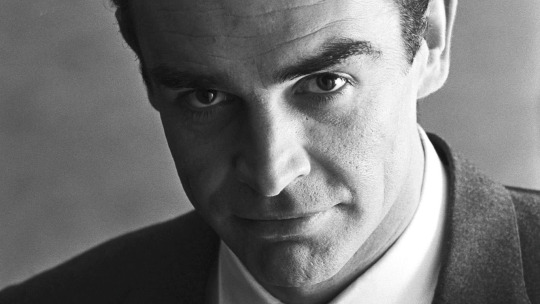
El hombre que hizo de James Bond un fenómeno mundial partió esta madrugada de una forma que hasta el mismo 007 envidiaría: descansando pacíficamente en su residencia de las Bahamas, mismo sitio donde 55 años atrás evadió tiburones y evitó que se concrete la amenaza nuclear con la que SPECTRE extorsionaba a la OTAN.
El actor escocés Sean Connery, según informó su hijo Jason a la BBC, murió a los 90 años tras padecer algunas pequeñas dolencias. Más allá de lo esperable por su avanzada edad, el mundo no sale de su asombro: tal como sucedió en 2017 cuando partió Roger Moore, nunca nos imaginamos que James Bond pueda llegar a morir. Y es que aunque los actores -en especial Connery- trataron lo más que pudieron de alejarse de esa imborrable imagen del esmoquin y la pistola Walther PPK cruzada en el pecho, muy en el fondo ellos saben que es imposible hacerlo una vez que posaron así.
Y (valga la redundancia) en especial Connery, quien rápidamente tras la década del 70 dejó relucir su calva cabellera y se dejó crecer bigote y barba para evitar ser identificado como el personaje de Ian Fleming, pero a pesar de ésto muchos seguían identificándolo como el único y genuino 007.
Hasta las revistas de fans, siempre fieles a EON Productions, minimizaron el estreno de Octopussy (con Roger Moore, en 1983) para promocionar el gran regreso del Bond original en Nunca Digas Nunca Jamás, donde el actor escocés aceptó -de ahí el título del film, sugerido por su esposa Micheline- volver a ser el agente secreto cuando se lo propuso el productor Kevin McClory, legalmente habilitado para realizar una nueva versión de Operación Trueno que compitiera con el Bond del productor Albert R. Broccoli.
Thomas Sean Connery fue hijo de una familia de clase trabajadora. La apremiante situación económica de su hogar en Edinburgo lo forzó a realizar diversos trabajos antes de inclinarse por la actuación: fue lustrador de ataúdes, camionero, boxeador de peso liviano, fabricante de ladrillos y fisiculturista.
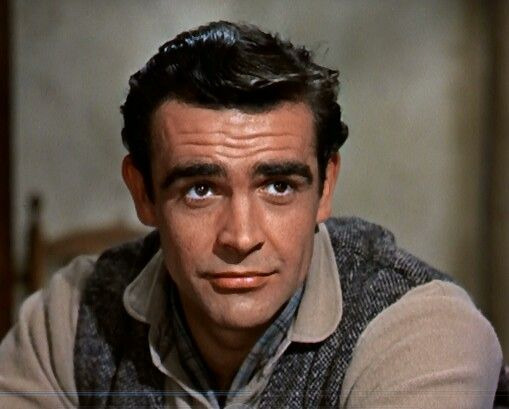
Fueron sus rasgos masculinos y su agilidad al moverse los que atrajeron a Dana, esposa del productor Albert R. “Cubby” Broccoli -durante una función del film de Disney El Cuarto Deseo- y llevaron a este desconocido musculoso a ser el primer Bond cinematográfico. United Artists presionó por una gran estrella norteamericana, Ian Fleming estaba indeciso, pero Broccoli y su socio Harry Saltzman siguieron apostando por él y no se equivocaron: habían encontrado el James Bond perfecto. Un hombre viril, audaz, seductor, capaz de robarle un beso a una chica a la vez que abatía a un enemigo de un simple golpe. Todo eso vestido con los mejores trajes a medida de Saville Row o después de vencer a un enemigo (o a una futura conquista femenina) en las mesas de chemin de fer.
Tanto apabullamiento publicitario lo alejó del personaje, pero su carrera no dejó de tener éxito: en 1971 participó en el film de Sidney Lumet El Gran Golpe, y dos años más tarde, mientras Roger Moore debutaba como 007, el mismo director lo llamó para el film que muchos consideran como una de sus más espectaculares (y sin embargo olvidadas) actuaciones: Hasta Los Dioses Se Equivocan, en el rol de un violento policía que se excede en el interrogatorio de un hombre sospechado de abusar y asesinar a una niña pequeña. Connery fue también el coronel Arbuthnot en Crimen en el Expreso Oriente, un envejecido Robin Hood en Robin y Marian y el justiciero policía Malone en Los Intocables, rol que le valió un Oscar como Mejor Actor de Reparto en 1987.
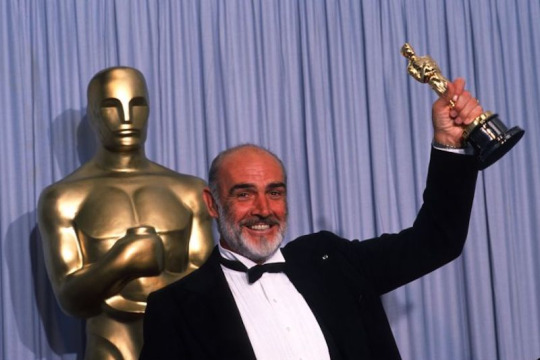
Su carrera entre los años 80 y 90 fue también muy fructífera, en roles que variaron desde el capitán Marko Raimus de La Caza Al Octubre Rojo, el romántico editor Barley Blair de La Casa Rusia, el padre de Indiana Jones y el excéntrico Sir August de Wynter, villano de Emma Peel y John Steed en la adaptación cinematográfica de la serie Los Vengadores. No podemos olvidar también al conde William de Baskerville en El Nombre de la Rosa ni al ladrón de guante blanco Mac, socio de crimen de Catherine Zeta-Jones en La Emboscada, de 1999. Lo destacable es que en todos sus roles mantenía impoluta su imagen de caballero escocés y su presencia se hacía sentir, dentro y fuera de la pantalla grande.
Su último film fue La Liga de los Caballeros Extraordinarios, de 2003. Dos años más tarde, curiosamente, volvió a ser James Bond al aportar su voz para el videojuego basado en De Rusia Con Amor, realizado por Electronic Arts. Y más allá de hacer público su encono con el personaje unas cuantas veces, en sus últimos años a Sean no se le pudo evitar escapar una lágrima y una sonrisa cuando los musicalizadores del US Open lo reprodujeron para homenajear su presencia en la edición de 2017.

El mundo de 007 ha demostrado su pesar en este día: “Era una persona maravillosa, un gran caballero”, dijo la cantante Shirley Bassey, intérprete de los temas de Goldfinger y Los Diamantes Son Eternos. Por su parte, el actual 007 Daniel Craig ha dicho que “se fue un grande del cine” y los productores Michael G. Wilson y Barbara Broccoli no dejaron de destacar la clave importancia que tuvo su actuación como Bond: “Le estaremos agradecidos eternamente. Siempre será recordado como el hombre cuya imborrable entrada en el mundo del cine fue al mencionar las palabras 'Mi nombre es Bond... James Bond'".
Para nosotros, 31 de octubre de 2020 será recordado como el día en que el legendario James Bond 007 original, se presentó frente a San Pedro y -tal como lo hizo con Blofeld en Sólo Se Vive Dos Veces- le dijo que ahora comenzaba su segunda vida. O quizá, como lo hizo con Shady Tree en Los Diamantes Son Eternos, simplemente se dirija al Hotel Tropicana, que es muy cómodo.
Hasta siempre, Sean.
#sean connery#james bond#goldfinger#qepd#dr no#de Rusia con amor#operacion trueno#Solo se vive dos veces#los diamantes son eternos#nunca digas nunca jamás
0 notes
Text

Make your quarantine LIT(erary) and join BookCon on May 30 & 31 for a free virtual event where the book community can stay connected while social distancing. BookConline will feature sessions throughout each day with different authors and publishers to give you a front row look at debut books and behind-the-scenes peeks at some of your favorite titles. Plus - ARC giveaways, quizzes, trivia, and more!
BookCon Sessions:
Creating Creative Social Justice (May 31, 2020, 12:20 PM- 1:00 PM EST)
This conversation between fan-favorite authors about their books that all try to help move our culture forward just as much as they try to entertain their readers. Christina Hammonds Reed, Jennifer De Leon, Rebecca Roanhorse, Kacen Callender, Nic Stone, have been hugely successful being able to craft captivating stories featuring characters tackling issues of race, gender, and class. Let’s learn how these esteemed authors walk the fine line of writing page-turning stories while addressing the vitally important social issues of today.
Watch live at: http://www.facebook.com/bookcon
Speakers:
Christina Hammonds Reed
Jennifer De Leon
Rebecca Roanhorse
Kacen Callender
Nic Stone
Hill House Horror: Joe Hill, Carmen Maria Machado, Laura Marks & M.R. Carey (May 31, 2020, 12:20 PM - 1:00 PM EST)
Join horror and mystery icons Joe Hill, Carmen Maria Machado, Laura Marks, and M.R. Carey as they share spooky, nail-biting insights into their acclaimed books.
Watch live at: http://www.facebook.com/bookcon
Panelists:
Joe Hill
Carmen Maria Machado
Moderator:
Mark Doyl
Panelists:
Laura Marks
M.R. Carey
Truth or Dare with DC’s YA Authors (May 31, 2020, 1:00 PM -1:40 PM EST)
Your favorite DC YA authors and artists Kami Garcia, Danielle Paige, Laurie Halse Anderson, Alex Sanchez, and Sarah Kuhn are coming to BookCon to play the ultimate game of Truth or Dare — with a DC twist!
Watch live at: http://www.facebook.com/bookcon
Panelists:
Laurie Halse Anderson
Danielle Paige
Kami Garcia
Alex Sanchez
Sarah Kuhn
Korean American Voices: Jenny Han, Mary H.K. Choi, David Yoon, and Kat Cho (May 31, 2020, 1:00 PM - 1:40 PM EST)
Beloved authors Jenny Han, Mary H.K. Choi, David Yoon, and Kat Cho discuss how Korean and Korean-American experiences shape and inform their best-selling novels.
Watch live at: http://www.facebook.com/bookcon
Panelists:
Mary H.K. Choi
Jenny Han
David Yoon
Kat Cho
Moderator
Catherine Hong
Cassandra Clare in Conversation with Holly Black (May 31, 2020, 1:40 PM -2:20 PM EST)
Enjoy a dazzling conversation between icons Cassandra Clare and Holly Black.
Watch live at: http://www.facebook.com/bookcon
Panelists:
Cassandra Clare
Holly Black
Improve Your Mind, Body, Soul, and Even your Wallet (May 31, 2020, 1:40 PM -2:20 PM EST)
We’re all trying to improve ourselves, whether that be financially or with how we manage personal relationships or our own well-being and self confidence. Ryan Serhant discusses his new book to show us how we can start to turn our financial dreams into financial realities.
Watch live at: http://www.facebook.com/bookcon
Panelists:
Ryan Serhant
Bevy Smith
Meg Nocero
Moderator:
Raakhee Mirchandani
Justice for DC Heroes (May 31, 2020, 2:20 PM - 3:00 PM EST)
Young Adult and middle grade authors discuss adapting iconic DC superheroes into novels!
Watch live at: http://www.facebook.com/bookcon
Panelists:
Aisha Saaed
Matt de la Pena
Moderator:
Alea Perez
Are You There BookCon? It’s Judy and Jenny. (May 31, 2020, 2:20 PM - 3:00 PM EST)
Join Judy Blume and Jenny Han for a not-to-be-missed conversation about creating timeless coming-of-age stories, supporting bookstores in the age of coronavirus, and the 50th anniversary of Blume’s bestselling classic, Are You There God? It’s Me, Margaret.
Watch live at: http://www.facebook.com/bookcon
Panelists:
Jenny Han
Judy Blume
Happily Ever Afters with Sourcebooks (May 31, 2020, 3:00 PM -3:40 PM EST)
Pop some popcorn, curl up in your pj’s with a fluffy blanket, find some tissues, and get ready to laugh, swoon, cry, and fall in love with these summer romcoms.
Watch live at: http://www.facebook.com/bookcon
Panelists:
Annabeth Albert
K.L. Walther
Miranda Kenneally
Sarah Morgenthaler
Suzanne Park
Moderator:
Sasha Alsberg
Young Adult New Voices ( May 31, 2020, 3:00 PM - 3:40 PM EST)
Discover your next favorite author at this BookCon event introducing four fresh voices in young adult.
Watch live at: http://www.facebook.com/bookcon
Panelists:
Angeline Boulley
Amanda McCrina
Mike Curato
Kiku Hughes
Moderator:
Sara Faring
Exploring Audio through Gayle Forman’s End of My Heart (May 31, 2020, 3:40 - 4:20 PM EST)
Gayle Foreman discusses her first audio-only Audible Original release, The End of My Heart.
Watch live at: http://www.facebook.com/bookcon
Panelist:
Gayle Forman
Moderator:
Libba Bray
The Broken World (May 31, 2020, 3:40 - 4:20 PM EST)
From fighting zombies to stopping magical creature poachers to burning corrupt governments to the ground, fantasy and dystopian novels are often the perfect place to tackle complicated issues against fantastical backgrounds. Justina Ireland, Adam Silvera, and Tahereh Mafi discuss breaking the world so their characters could fix it or at least carve a path toward a more hopeful future.
Watch live at: http://www.facebook.com/bookcon
Panelists:
Justina Ireland
Tahereh Mafi
Adam Silvera
Moderator:
Soman Chainani
Worlds Big and Small (May 31, 2020, 4:20 PM - 5:00 PM EST)
Stories inspired by Mister Rogers neighborhood, to the deep ocean, to the universe! Join Matthew Cordell, Jason Chin, and John Hare, as they discuss the behind-the-scenes of their new picture books!
Watch live at: http://www.facebook.com/bookcon
Panelists:
Matthew Cordell
Jason Chin
John Hare
Moderator:
Maggie Pouncey
#book#books#bookish#booklr#booklover#bookworm#book addict#bookaholic#bibliophile#booksarelife#yabooks#ya books#young adult books#book blog#book blogger#yalit#yareads#young adult#book account#bookcon#bookcon 2020#bookconline
0 notes